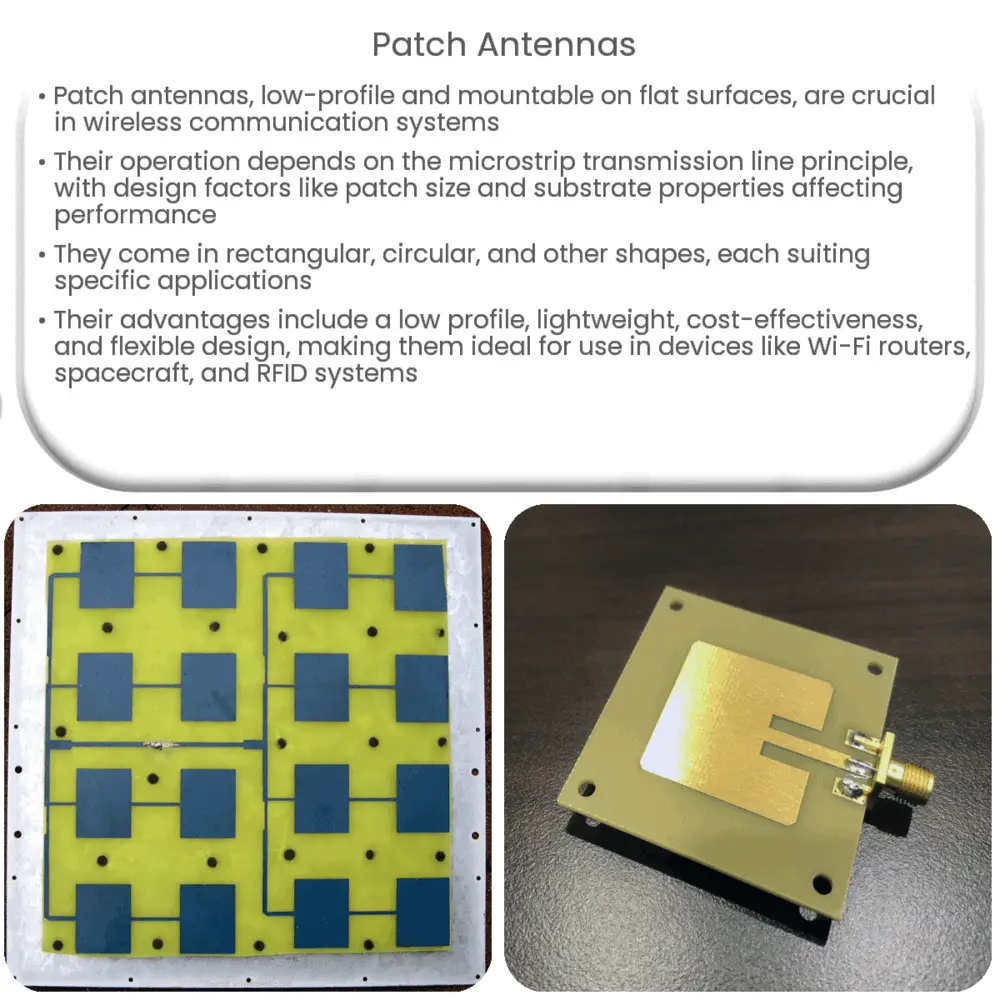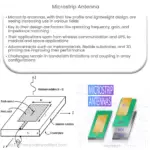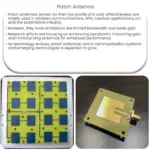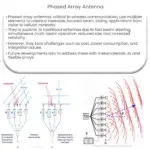Explore the world of patch antennas, their design, working principles, advantages, and diverse applications in wireless communication systems.

Patch Antennas: An Overview
Emerging as one of the most versatile antenna configurations for wireless communication systems, patch antennas offer an array of benefits that are crucial in today’s technologically advanced world. Herein, we will delve into the understanding of patch antennas, their design, working principles, and applications.
What is a Patch Antenna?
A patch antenna, also known as a microstrip antenna, is a type of radio antenna with a low profile that can be mounted on a flat surface. It consists of a flat rectangular, circular or other shaped conducting patch mounted on a grounded dielectric substrate. The patch is generally made of conducting material such as gold or copper while the substrate is typically made of a dielectric material.
Working Principle of Patch Antennas
The working of a patch antenna is governed by the principle of the microstrip transmission line. The radiating patch and the ground plane are analogous to the two conductors of the microstrip line. When radio frequency (RF) energy is applied to the antenna, the patch becomes energized and radiates electromagnetic waves into the air. The height of the dielectric substrate and the thickness of the conducting patch determine the operation frequency of the antenna.
Design Elements
- Size of the patch: The size of the conducting patch plays a crucial role in determining the operating frequency of the antenna. As the dimensions of the patch increase, the resonant frequency decreases.
- Substrate properties: The properties of the substrate, like dielectric constant and thickness, also affect the performance of the antenna. Higher dielectric constants allow the antenna to be made smaller.
- Feed point: The location of the feed point can influence the antenna’s impedance and bandwidth. A common technique is to offset the feed from the center of the patch.
Types of Patch Antennas
- Rectangular Patch Antennas: These are the most commonly used patch antennas due to their simple design and ease of analysis and fabrication.
- Circular Patch Antennas: They are preferred when a relatively wider bandwidth is required. However, they are more complex to analyze and design than rectangular patch antennas.
- Elliptical and Other Shaped Patch Antennas: Other shapes like elliptical, triangular, and ring-shaped patches are used for specific applications where unique radiation patterns are desired.
Advantages of Patch Antennas
Patch antennas are sought after for their unique set of advantages, which make them well-suited for numerous applications:
- Low Profile: Their thin, flat design allows them to be mounted on surfaces without causing significant obstruction or protrusion. This makes them ideal for use in aircraft, spacecraft, and mobile devices.
- Lightweight and Durable: These antennas are lightweight and resilient, capable of withstanding harsh conditions while maintaining optimal performance.
- Cost-effective: Patch antennas are relatively inexpensive to manufacture and easy to design, which contributes to their widespread use.
- Flexible Design: They can be designed to operate at various frequencies and can be easily integrated into an array for increased performance and versatility.
Applications of Patch Antennas
Patch antennas are employed in a wide range of applications due to their compact size, ease of fabrication, and robustness. Here are a few notable applications:
- Wireless Communication: They are extensively used in wireless communication devices like Wi-Fi routers and mobile phones.
- Spacecraft and Aircraft: Owing to their low profile and light weight, these antennas find application in space vehicles and aircraft for communication purposes.
- GPS Devices: Patch antennas are used in Global Positioning System (GPS) receivers due to their directional radiation pattern and high gain.
- Radio Frequency Identification (RFID): They are commonly used in RFID systems for tag detection and data transfer.
Conclusion
In conclusion, patch antennas, with their distinctive attributes, play a crucial role in the realm of wireless communication and beyond. Their compact and robust design coupled with high performance and cost-effectiveness make them an ideal choice for a myriad of applications. As advancements in the field of electronics and communication continue to unfold, the demand and scope for patch antennas are poised to grow, underscoring their importance in our technologically driven society.




